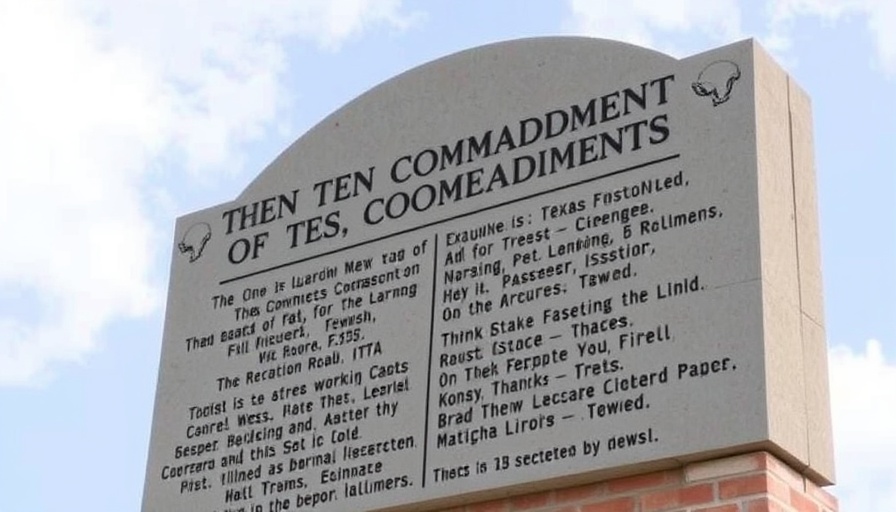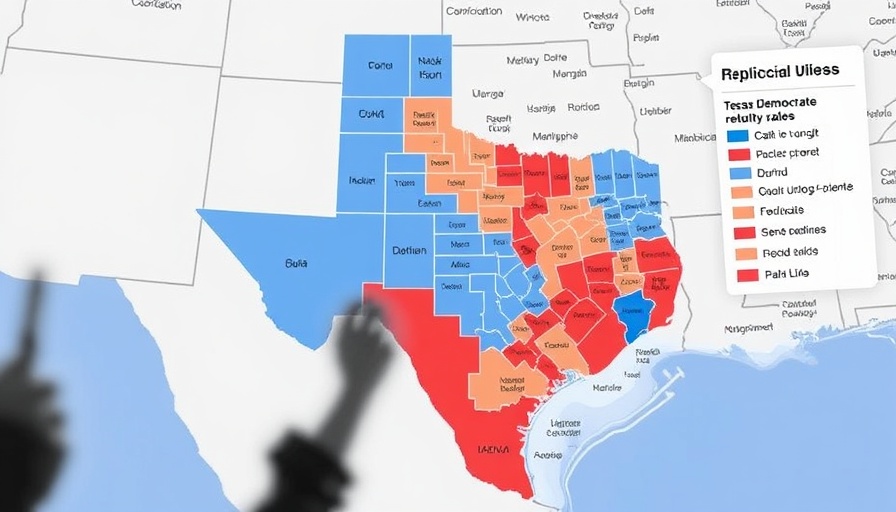
Texas Moves to Mandate Ten Commandments Display in Classrooms
In a significant legislative shift, Texas is moving toward requiring the display of the Ten Commandments in every public school classroom. A bill cleared the state House of Representatives on Sunday with a vote of 82-46, paving the way for Governor Greg Abbott's expected approval. This initiative aligns Texas with similar laws recently enacted in Louisiana and Arkansas, indicating a rising trend among certain states to incorporate religious texts into public education.
The Political Landscape Behind the Bill
Texan Lt. Gov. Dan Patrick has positioned the Ten Commandments bill, formally known as SB 10, as a vital aspect of the legislative session, expressing that children in schools should receive the moral guidance reflecting the values of the nation’s founding fathers. Notably, this legislation faced significant opposition from Democratic lawmakers, who proposed amendments aimed at giving school districts more control over implementation and allowing for displays in various languages. All amendments were subsequently defeated by a Republican majority, underscoring the polarization within Texas politics.
Implications and Potential Challenges
Should the bill be signed into law, Texas public schools will be mandated to display the Ten Commandments in a prominent location within classrooms. The requirements specify that the poster or framed copy must be at least 16 inches wide and 20 inches tall, ensuring visibility to students and staff alike. However, constitutional experts warn that this law is likely to face legal challenges, similar to situations arising in Louisiana, where a coalition of parents contested a similar measure. Critics argue it infringes upon the separation of church and state, a founding principle designed to protect diverse beliefs in public spaces.
What This Means for Texas Students
For many supporters, displaying the Ten Commandments is seen as a reinforcement of ethical teaching, presenting a historical context that they believe underpins American values. Proponents argue that such measures are necessary to instill a sense of moral responsibility among students. Yet, opponents point out that these values can be conveyed without reference to religious texts, emphasizing the need for inclusivity in educational environments.
Looking Ahead: Implementation and Enforcement
The practical aspects of this law raise several questions. The bill lacks an enforcement mechanism, leaving uncertainty regarding what actions, if any, would apply to schools that refuse compliance. According to analyses conducted by state House committees, the bill does not provide clear penalties for failure to adhere, potentially leading to confusion among school districts and educators as they navigate this new requirement.
Public Reactions and Sentiments
The reaction from the public remains mixed. While some parents and religious organizations celebrate what they see as a victory for faith-based values in education, others express concern over the potential division it may sow among students of varying beliefs. Texas’ diverse population means that this legislative action could impact community relations, prompting discussions about the role of religion in public school settings and how best to respect different cultural contexts within a shared learning environment.
A Historical Perspective on Education and Religion
The movement to display the Ten Commandments can also be viewed through a historical lens, reflecting long-standing debates within American society about the interplay of religion and education. From the 1962 Supreme Court ruling prohibiting school-sponsored prayer to contemporary movements advocating for religious displays in schools, the discussion continues to evolve. Understanding this context helps illuminate the current discourse surrounding SB 10 and its potential ramifications.
As Governor Abbott prepares to affirm this new legislation, Texas stands at a crossroads of educational policy and personal belief, indicative of broader societal discussions about faith, law, and the future of public education.
 Add Row
Add Row  Add
Add 




Write A Comment